We're all trying to figure out where these headlines came from. The stable channel with all the fixes does not (at this time) bundle the warning. How is that users have become confused and believe the dev channel is the only way to get security fixes?
I don't know why you'd jump to the dev channel, though. Just apply the stable channel update.
I'm going to go way out on a limb here and guess nothing will happen if I do neither.
The entirety of Discovery was canon breaking, so they pretty thoroughly retconned it into a memory hole.
Thoughts and prayers for scarjo.
People are concerned about non issues all the time.
Should have gone with Barclay as Kovitch.
I'm sure it still works in photoshop or whatever, just not the windows stuff.
Because it comes from a laptop with rounded corners on the top of the lid and a flat hinge on the bottom.
What critical information are people putting in the six missing pixels?
Now people want recall?
It's so weird.
Due to the fact that Facebook has chosen to involve software that will allow the theft of my personal information, I do declare the following: on this day, 30th November 2014, in response to the new Facebook guidelines and under articles L.111, 112 and 113 of the code of intellectual property, I declare that my rights are attached to all my personal data, drawings, paintings, photos, texts etc... published on my profile since the day I opened my account. For commercial use of the foregoing my written consent is required at all times. Those reading this text can copy it and paste it on their Facebook wall. This will allow them to place themselves under the protection of copyright. By this release, I tell Facebook that it is strictly forbidden to disclose, copy, distribute, broadcast, or to take any other action against me on the basis of this profile and/or its contents. The actions mentioned above apply equally to employees, students, agents and/or other staff under the direction of Facebook. The contents of my profile include private information. The violation of my privacy is punished by the law (UCC 1 1-308 - 308 1 -103 and the Rome Statute). Facebook is now an open capital entity. All members are invited to post a notice of this kind, or if you prefer, you can copy and paste this version. If you have not published this statement at least once, you will tacitly allow the use of elements such as your photos as well as the information contained in your profile update. Do not share. Just copy on paste on your wall.
What?
Are these millions of potential customers in the room with us?
A simpler explanation is that users are tired of everybody with a customer support issue running to daddy HN and making a big fuss trying to get their way.
UTM may be somewhat shinier, but you can run anything you like in qemu on a mac.
Jesus, what clickbait. It's a bug in fluent bit.
I'm impressed the verge was able to refer to the issue without using the word nudes in the headline.
Isolated loop variables, range over integers, math/rand v2 and enhanced routing.
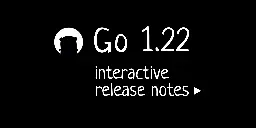
> Based on the Go 1.22 release notes from the Go team (3-Clause BSD License), with many interactive examples added. This blog post is synchronized with the source document as it gets updated.
The pièce de résistance. EDIT: Whoa looks like Hackaday found this post ! If anyone's interested in learning more about this, I posted this...
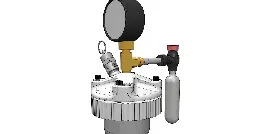
> High pressure, high forces, long lever arms...all of that meant heavy and strong (read: expensive) parts which I was not looking forward to having to fabricate. Instead, I settled on the simpler idea of harnessing the power of compressed gas. Instead of using a high mechanical advantage lever to push a piston, compressed CO2 would be dispensed from a small and inexpensive 12g or 16g cartridge which would then generate the requisite pressure to properly extract espresso. This concept is not actually novel; both an unsuccessful kickstarter and a now-defunct handheld espresso maker (with a fanatical user base) employed this mechanism.
In this write-up, we’ll delve into how, through differential fuzzing, we uncovered a bug in Go’s exp/net HTML’s tokenizer. We’ll show potential XSS implications of this flaw. Additionally, we’ll outline how Google assessed this finding within their VRP program and guide how to engage and employ fuzz...
> In this write-up, we’ll delve into how, through differential fuzzing, we uncovered a bug in Go’s exp/net HTML’s tokenizer. We’ll show potential XSS implications of this flaw. Additionally, we’ll outline how Google assessed this finding within their VRP program and guide how to engage and employ fuzzing to evaluate your software.
Go 1.21 adds a new port targeting the WASI preview 1 syscall API
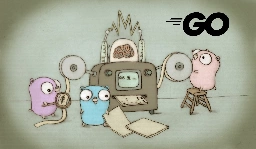
> Go 1.21 adds a new port targeting the WASI preview 1 syscall API through the new GOOS value wasip1. This port builds on the existing WebAssembly port introduced in Go 1.11.
> WebAssembly (Wasm) is a binary instruction format originally designed for the web. It represents a standard that allows developers to run high-performance, low-level code directly in web browsers at near-native speeds.
> Go first added support for compiling to Wasm in the 1.11 release, through the js/wasm port. This allowed Go code compiled using the Go compiler to be executed in web browsers, but it required a JavaScript execution environment.
> As the use of Wasm has grown, so have use cases outside of the browser. Many cloud providers are now offering services that allow the user to execute Wasm executables directly, leveraging the new WebAssembly System Interface (WASI) syscall API.
Tl;Dr Cgo calls take about 40ns, about the same time encoding/json takes to parse a single digit integer. On my 20 core machine Cgo call performance scales with core count up to about 16 cores, after which some known contention issues slow things down. Disclaimer While alot of this article argues th...
> Cgo calls take about 40ns, about the same time encoding/json takes to parse a single digit integer. On my 20 core machine Cgo call performance scales with core count up to about 16 cores, after which some known contention issues slow things down.
> It was obvious already before that NVD really does not try very hard to actually understand or figure out the problem they grade. In this case it is quite impossible for me to understand how they could come up with this severity level. It’s like they saw “integer overflow” and figure that wow, yeah that is the most horrible flaw we can imagine, but clearly nobody at NVD engaged their brains nor looked at the “vulnerable” code or the patch that fixed the bug. Anyone that looks can see that this is not a security problem.
> The vulnerability should be obvious: at some point in the boot process, the VMK transits unencrypted between the TPM and the CPU. This means that it can be captured and used to decrypt the disk.
The Go 1.21 standard library includes a new structured logging package, log/slog.
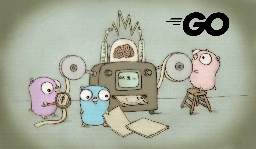
> The new log/slog package in Go 1.21 brings structured logging to the standard library. Structured logs use key-value pairs so they can be parsed, filtered, searched, and analyzed quickly and reliably. For servers, logging is an important way for developers to observe the detailed behavior of the system, and often the first place they go to debug it. Logs therefore tend to be voluminous, and the ability to search and filter them quickly is essential.

> The flaw is tracked as CVE-2023-40477 and could give remote attackers arbitrary code execution on the target system after a specially crafted RAR file is opened.
> RARLAB released WinRAR version 6.23 on August 2nd, 2023, effectively addressing CVE-2023-40477.
Go 1.21 expands Go's commitment to backward compatibility, so that every new Go toolchain is the best possible implementation of older toolchain semantics as well.
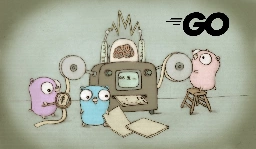
> Boring is good. Boring is stable. Boring means being able to focus on your work, not on what’s different about Go. This post is about the important work we shipped in Go 1.21 to keep Go boring.
> There will not be a Go 2 that breaks Go 1 programs. Instead, we are going to double down on compatibility, which is far more valuable than any possible break with the past. In fact, we believe that prioritizing compatibility was the most important design decision we made for Go 1.
> Espresso coffee is among the most consumed beverages in the world. Recent studies report a protective activity of the coffee beverage against neurodegenerative disorders such as Alzheimer′s disease. Alzheimer′s disease belongs to a group of disorders, called tauopathies, which are characterized by the intraneuronal accumulation of the microtubule-associated protein tau in fibrillar aggregates. In this work, we characterized by NMR the molecular composition of the espresso coffee extract and identified its main components. We then demonstrated with in vitro and in cell experiments that the whole coffee extract, caffeine, and genistein have biological properties in preventing aggregation, condensation, and seeding activity of the repeat region of tau. We also identified a set of coffee compounds capable of binding to preformed tau fibrils. These results add insights into the neuroprotective potential of espresso coffee and suggest candidate molecular scaffolds for designing therapies targeting monomeric or fibrillized forms of tau.
In vitro results, take with a grain of salt or shot of espresso.
By Mark Brand, Project Zero In mid-2022, Project Zero was provided with access to pre-production hardware implementing the ARM MTE specifi...
MTE = Memory Tagging Extension
> In mid-2022, Project Zero was provided with access to pre-production hardware implementing the ARM MTE specification. This blog post series is based on that review, and includes general conclusions about the effectiveness of MTE as implemented, specifically in the context of preventing the exploitation of memory-safety vulnerabilities.
> Despite its limitations, MTE is still by far the most promising path forward for improving C/C++ software security in 2023. The ability of MTE to detect memory corruption exploitation at the first dangerous access provides a significant improvement in diagnostic and potential security effectiveness. In comparison, most other proposed approaches rely on blocking later stages in the exploitation process, for example various hardware-assisted CFI approaches which aim to block invalid control-flow transfers.
Go 1.21 Exciting Updates and Enhancements: A Comprehensive Overview

> The Go programming language has released its first Release Candidate (RC) for version 1.21, which is packed with new features, improvements, and performance enhancements. This article provides an overview of the notable changes and features in Go 1.21, along with some exciting additions to the standard library.
- PGO
- min, max functions
- preview of loop capture change
- new slog, slices, and map packages
- WASI port
Maddie Stone, Security Researcher, Threat Analysis Group (TAG) This is Google’s fourth annual year-in-review of 0-days exploited in-the-wild...

> 41 in-the-wild 0-days were detected and disclosed in 2022, the second-most ever recorded since we began tracking in mid-2014, but down from the 69 detected in 2021. Although a 40% drop might seem like a clear-cut win for improving security, the reality is more complicated.
> A few years ago I wrote pygit, a small Python program that’s just enough of a Git client to create a repository, add some commits, and push itself to GitHub.
> I wanted to compare what it would look like in Go, to see if it was reasonable to write small scripts in Go – quick ’n’ dirty code where performance isn’t a big deal, and stack traces are all you need for error handling.
> The result is gogit, a 400-line Go program that can initialise a repository, commit, and push to GitHub. It’s written in ordinary Go … except for error handling, which is just too verbose in idiomatic Go to work well for scripting (more on that below).
> Our current inlining policy remains built on a foundation that is becoming increasingly strained as we add things like PGO, is increasingly anchored in past backend limitations, and it continues to use an overly simplistic cost model driven by an overly simplistic scheduler. Between unified IR and the untapped possibilities of PGO, I believe there’s now a significant opportunity to improve the inlining policy, resulting in significant performance improvements for Go applications, and reducing the effort and expertise needed to write highly efficient Go code.
> Go programmers have the good fortune of excellent testing and benchmarking tooling built into the standard library - in the testing package. However, benchmarking is hard. This isn't Go specific; it's just one of those things experienced developers learn over time.
> This post lists some common benchmarking pitfalls Go programmers run into. It assumes basic familiarity with writing Go benchmarks; consult the testing package documentation if needed. While these pitfalls are presented in Go, they exist in any programming language or environment, so the lessons learned here are widely applicable.